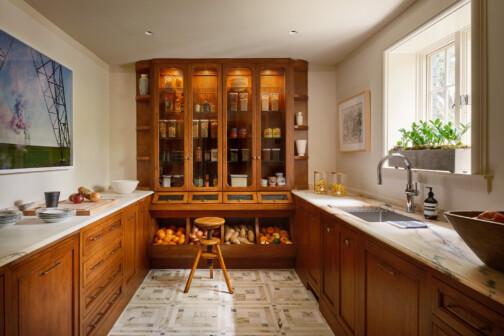
In a time when information is now ubiquitous on the web, exposure to the world is at your fingertips, and, accordingly, expectations are inherently unending. We have entered “The Age of Scarcity.” If we have access and exposure to everything, how can there be scarcity? Beyond the obvious scarcities caused by the Baby Boomer-led residuals of dirty water, dirty air, and the prevalence of dirty debt, one can find the more sublime examples in real estate.
There’s no lack of buildings, restaurants, hotels, or apartment buildings, and rest assured there will be even more forthcoming as the Dallas-Fort Worth metropolitan statistic area grows from 6 million to 9 million people in the next 15 years. Yet in this inventory, there remains a growing scarcity.
The scarcity may well expose itself in producing the relevant inventory that we all desire—buildings that meet our needs and desires as we change and evolve. One hundred years ago, the fireplace and operable window were central and crucial needs, and, accordingly, important in the design of housing. Now, they’re nothing more than amenities. Access to electric plugs, ample power, and telecommunications are central to our current needs, but do they address our future needs? Partially, but not completely.
Our societal, social, and personal needs continue to change at an accelerating pace, but our buildings continue to evolve remarkably slowly. The gap between our culture and desires and the real estate that is about to be built will probably increase before it decreases.
Coming out of a real estate recession, what is the safe bet to develop in the first round of new product? The safe bet, and what lenders and Wall Street can underwrite without “perceived risk,” is building more of the same product that performed best in the last cycle. But that product was designed six to 10 years ago. The 2002 Toyota Camry was a great car and was worth its price when it came out. In 2012, are you going to go build another round of 2002 Camrys with a new paint color on them just for good measure? Of course not. We want 2012 cars. Skip telling me about the new CD player that holds six CDs, and show me where my iPod plugs in!
As much as the desires remain quite different between generations (Baby Boomer vs. Echo Boomer), in this case it is all-encompassing. Would the Baby Boomer still prefer “Corinthian Leather” in their cars, or would they rather have standard leather and a built-in airplay option on their car stereos so they can play music from their smartphones? Would the young Echo Boomer rather have ceiling fans and stained cabinetry in their apartments, or a built-in flat screen TV and free Wi-Fi? This is a short conversation.
Blind obedience to the commodity product of yesterday is a sure bet to lead us to the scarcities of tomorrow. Think about it: Every one of us is constantly hot-wiring the environments where we live, work and play, trying to span the gap between what we own and where we live, with the life we are trying to live. (If you doubt this, just look under your office desk or behind your home entertainment center.) We know this cognitively and look for someone to provide for us exactly what we really want now, and not what we wanted five years ago. Technology does this for us. Although clothing and mobile technology evolve to meet new demands quite rapidly, buildings remain three generations behind.
If real estate development is both typically highly reactive, as well as complicated and time-consuming to design, finance, and develop, then being one generation in arrears is excusable—but three generations? The investment partner presenting the first big investment after the last market crash is not going to walk out on a limb. He or she is going to present the safest investment possible, and explain that it is “an example of what worked best last time;” therefore, what they should do. Great! How about that 8-Track player?! To be a prisoner of the moment is equally as dangerous as wild financial investing.
The radical societal evolution in America in the 1960’s resulted in the advent of Post-Modernism in both art and buildings. One salient legacy from Post Modernism—which I believe they got right—was the interconnection between classicism and contemporary culture. In the same way, the influences of mobile technology on social fabric and consumer patterns are bound to have a massive impact on multifamily and retail real estate. What was formerly difficult to access is now facile, and what was formerly commodity and easy to find is becoming scarce.
To locate all of the apartment leasing options in an area, and relevant information about them, used to require hiring an intermediary, as information was a scarce and traded commodity. Now, it’s a simple Google search. In a similar but opposite notion, whereas it was fairly easy to find an apartment before that that contained the desired amenities, it is now much more difficult. (Assuming you’d rather have Wi-Fi or a built in flat-screen TV than a ceiling fan.) One sure bet is that the transition from ceiling fans to flat screens is absolutely happening and soon will become the norm. It’s also a sure bet that the first round of product after the recession will be greatly bifurcated as to “old school” and “culturally relevant.”
When you speak to this next generation of renters and shoppers, they will tell you that they don’t surf “on” the Internet—they live “in” the Internet. They will tell you that where they shop is as relevant as what they buy, that they do not have a hard land line in their apartment, that they neither want nor need 1000 square feet for an apartment. They will tell you that there are a lot of apartments, but that there is a scarcity of apartments that have the amenities that they are looking for, if they could write a wish list.
These changes are not just isolated to the next generation. Baby Boomers are copying their younger subset in more than just their fashions and iPhones, there are also emulating their desire for experience over ownership. There is no doubt that the Baby Boomers already bought everything they could as proper poster children for over-consumption, and now even they are looking for different places to live and shopping experiences.
With online shopping, retail shops become part branding, part experience, and part sales. This next generation of shoppers has changed in both what they value, as well as how they live. If you listen long enough, you will also discover that when they have the time, they drive past 17 other shopping centers to go to NorthPark; not because there is something at NorthPark that couldn’t have been purchased someplace more convenient, but because it is fun. They go to Henderson, Bishop Arts, and the Design District because there are a scarcity of places where they can become un-commodified.
For the experiences and places that they really desire, we are moving from commodity to scarcity, and the trend will only strengthen. So … would you like to buy my 2002 Toyota Camry?
Michael Ablon is principal of PegasusAblon, a commercial real estate development, investment and management company. Contact him at [email protected].





